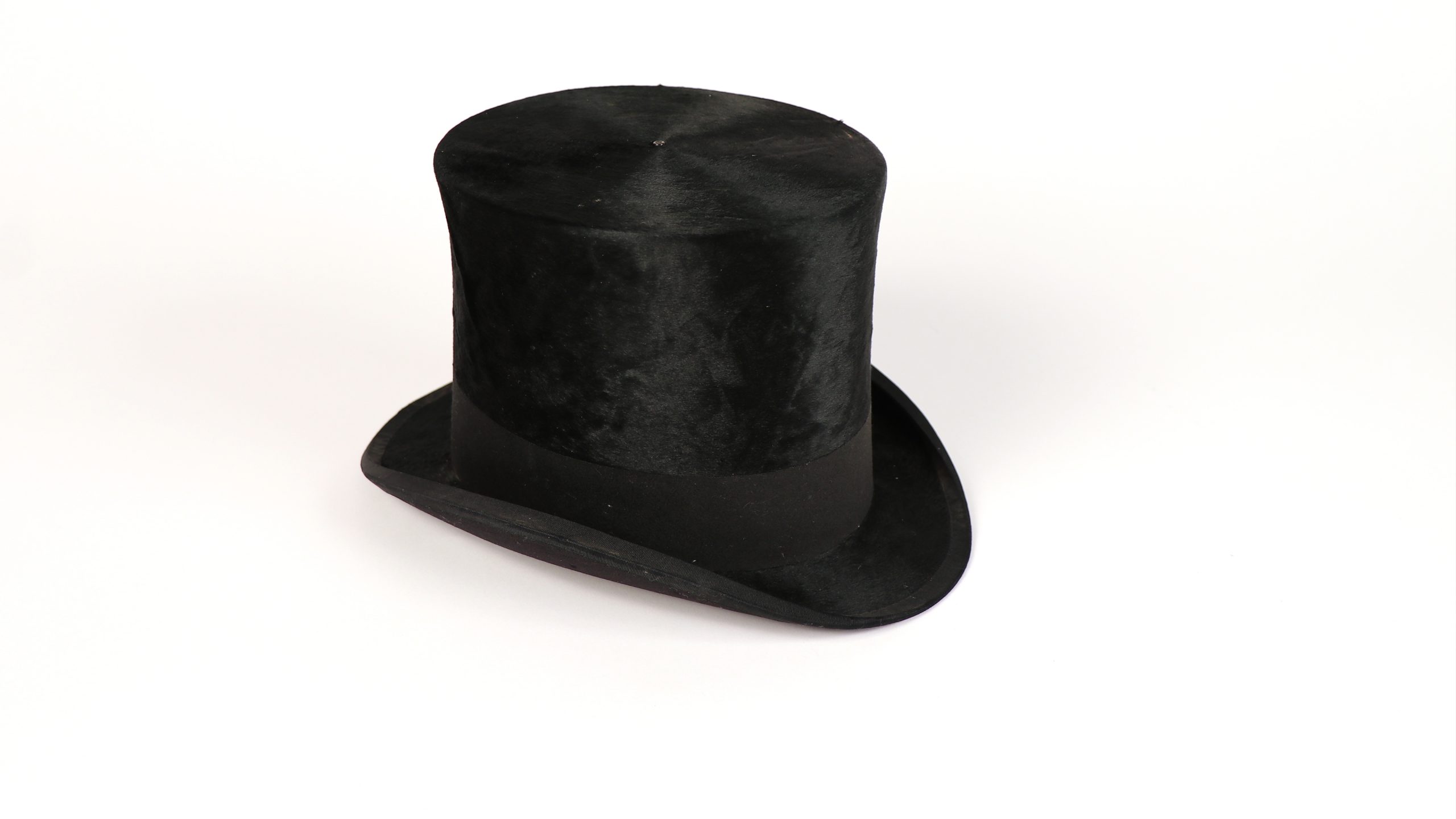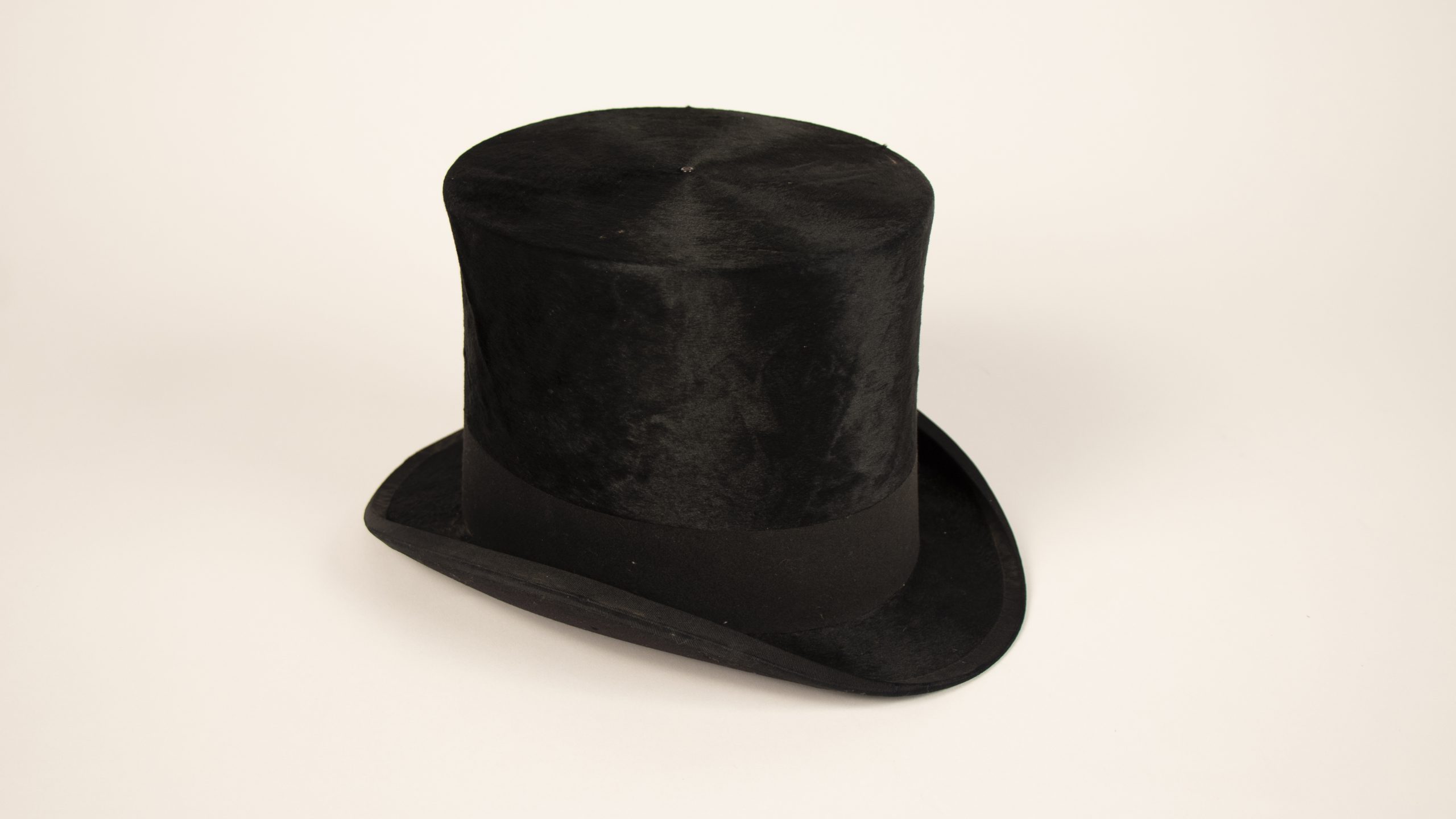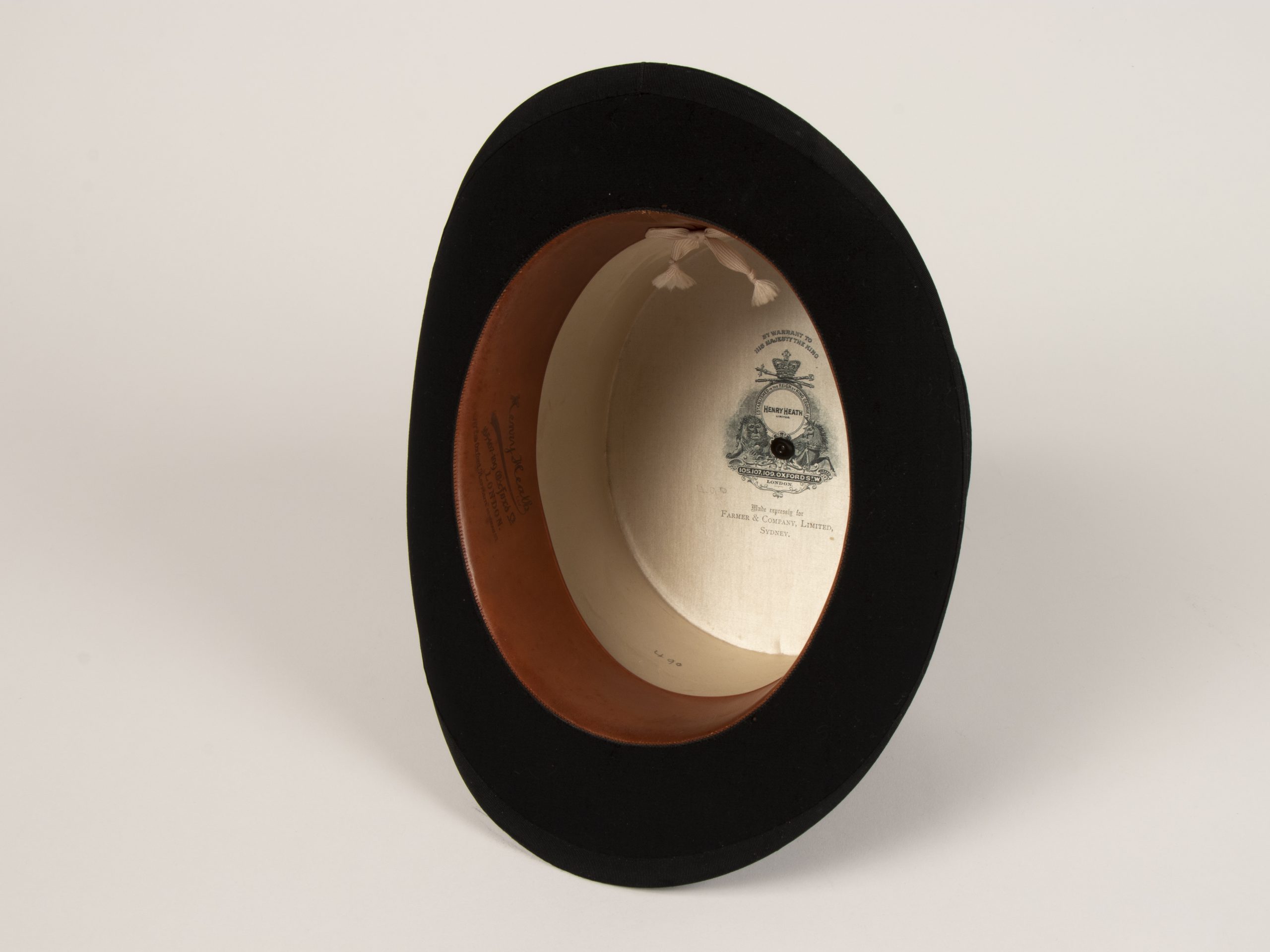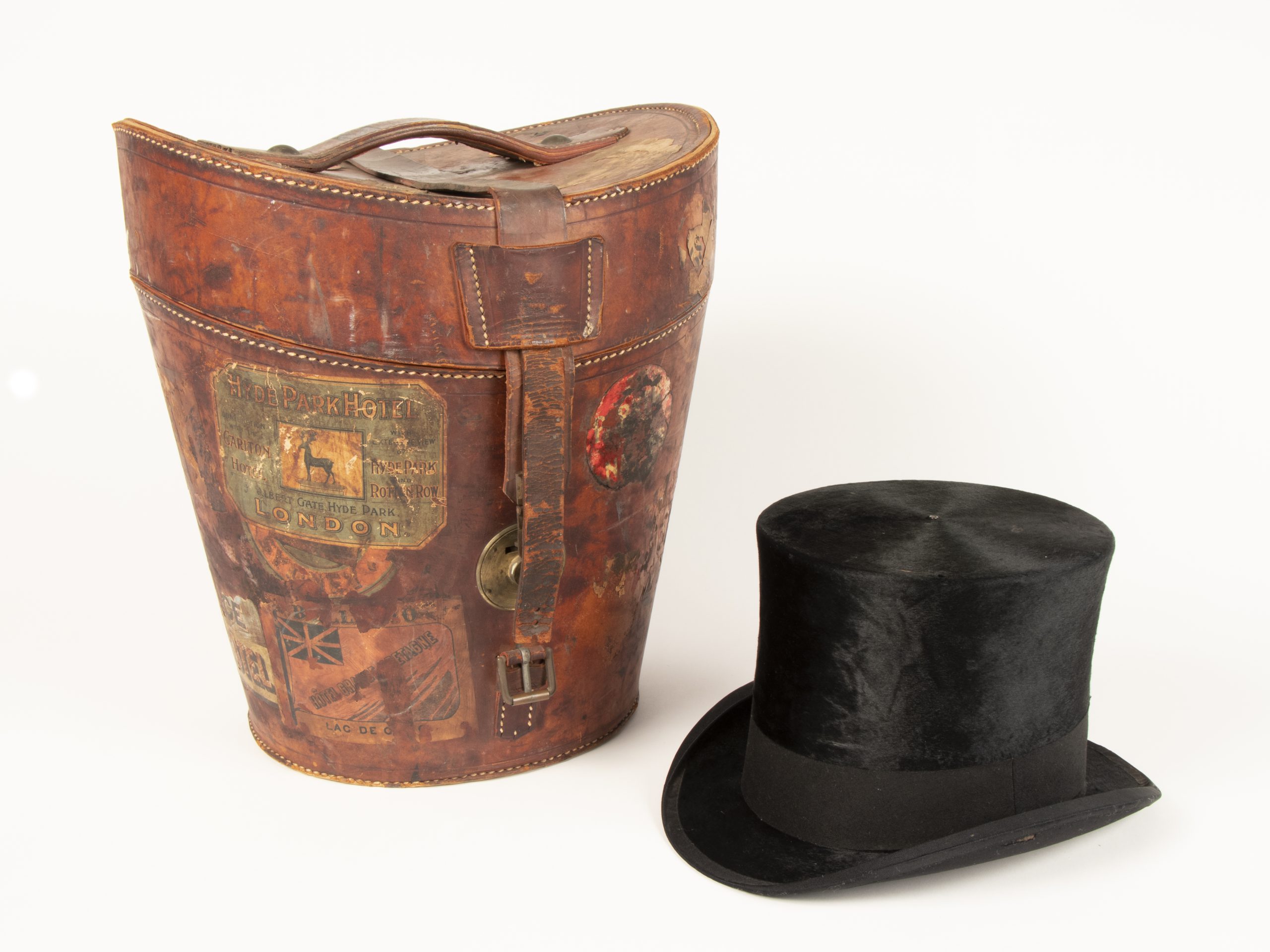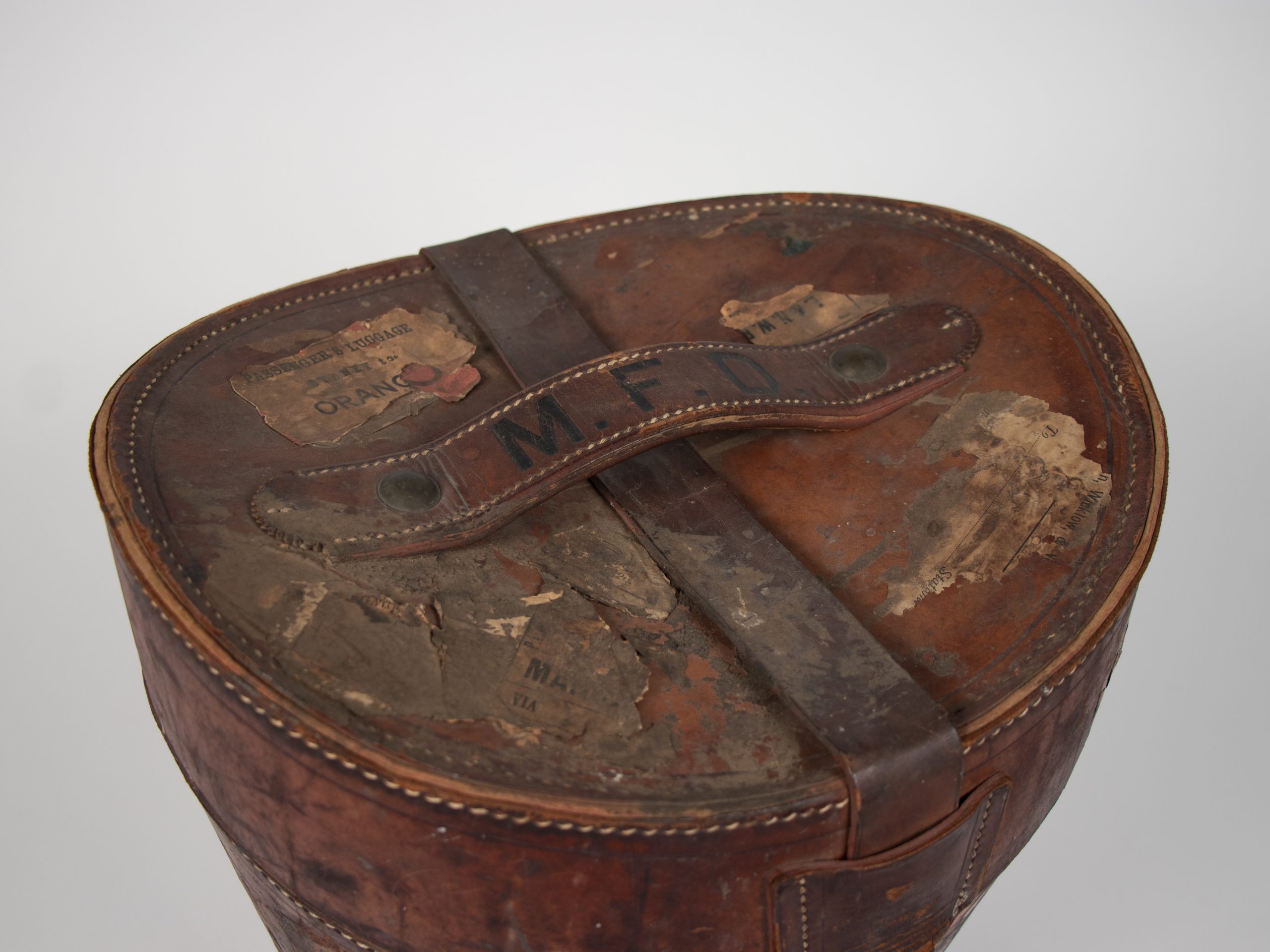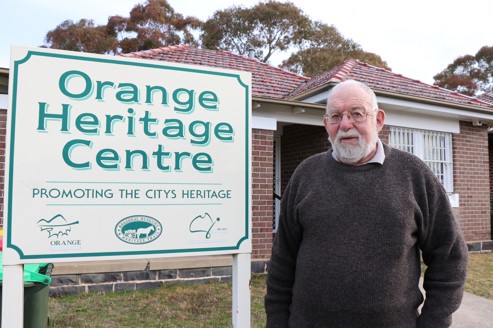A Good Fit
James Dalton's Top Hat
This elegant top hat first belonged to James Dalton Jnr (1834-1919) of Orange, who purchased and wore it in the latter half of the nineteenth century. Several decades earlier, James had fled the Great Irish Famine, leaving the town of Duntryleague in Limerick County, Ireland and migrating to NSW as a free-settler on the Panama, arriving at Sydney Cove in 1849. With his mother deceased and two siblings living in America, the thirteen year old joined his father, a former convict, who owned a store at Fredericks Creek, near Orange. In coming years James amassed considerable land and wealth, becoming the patriarch of one of the colony’s most influential Irish Catholic families. His top hat is symbolic of the standing he attained.
James started out with his own store on Summer Street, Orange in 1853. In a few years, with his brother Thomas who arrived in the colony in 1858, Dalton Bros was established, along with a flour mill and operations to grind and roast coffee. Together with his expanding pastoral interests, which included growing fine wool, was an involvement in civic affairs – as a magistrate, local government councilor and then as the mayor of Orange.
In 1876, James built a grand home in Orange befitting his wealth and social standing. Recalling his past, he named it Duntryleague, after his native hometown. Shortly afterwards, James acquired this top hat, which was made by the London hatter Henry Heath of Oxford Street around 1880. It was purchased in NSW through Farmer and Company, either through the emporium’s mail order service or in person from its flagship department store in Sydney which housed a gentleman’s outfitters and a tailoring section.
James Dalton’s top hat was donated to the Orange and District Historical Society together with a lockable brown leather hatbox. The initials ‘MFD’ are tooled into the handle for James’ son Michael Francis. Glued to the hatbox are shipping labels recalling journeys to Florence, Paris, London, Sydney and Orange. The hat, together its box, suggests that Michael not only inherited wealth and opportunity but also mirrored his father’s status and style.


